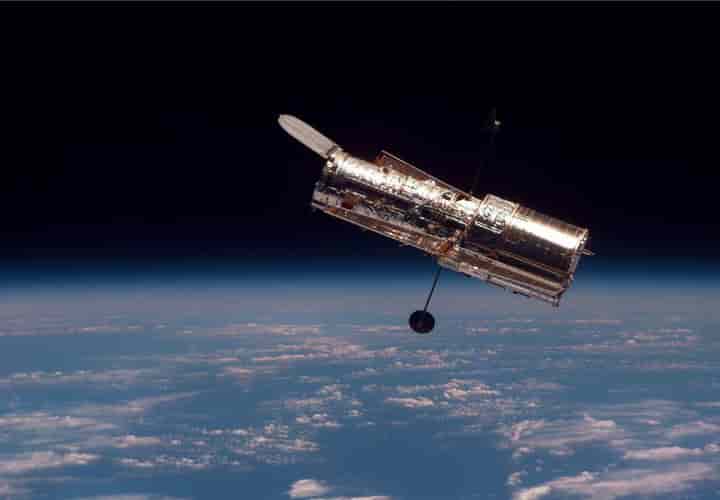Just when the space enthusiasts and explorers were wondering if the good old Hubble Telescope will ever come back to life to give them a peep into space, the good tidings came through. The much loved telescope started functioning, sending some spectacular pictures of distant galaxies to gladden their hearts!
Trouble with good old Hubble started on June 13 (Sunday), when the three decade old space equipment stopped working. With those responsible for it unable to detect and solve the issue, the National Aeronautics and Space Administration decided to bring in those who had actually created it. So the staff which had retired and others who had assisted in building this orbiting telescope were assembled again to help out the present team.
Interestingly, some of those who are at the helm of affairs now, were not even born when Hubble was launched in 1990!
According to an article in Smithsonianmag.com Nzinga Tull, Hubble Systems Anomaly Response Manager in a press release said: “That’s one of the benefits of a program that’s been running for over 30 years: the incredible amount of experience and expertise. It’s been humbling and inspiring to engage with both the current team and those who have moved on to other projects. There’s so much dedication to their fellow Hubble teammates, the observatory and the science Hubble is famous for.”
The dedication of this combined team – of past and present experts – paid dividends as the telescope was back into action on July 17 and it relayed some spectacular images. Among them are two which furnish details about two distant galaxies. One gives a rare glimpse of ARP-MADORE2115-273, which is a system with interacting stars located 297 million light-years from Earth while ARP-MADORE0002-503, is an unusual three-tailed spiral cluster about 490 million light-years away, according to reports by George Dvorsky in Gizmodo.
The team which produced these photos was led by astronomer Julianne Dalcanton of the University of Washington in Seattle, using the now working Hubble – that orbits our planet at 340 miles in altitude – to get the pictures of these unusual galaxies.
In a release posted on NASA’s Hubble website, Dalcanton said: “I’ll confess to having had a few nervous moments during Hubble’s shutdown, but I also had faith in NASA’s amazing engineers and technicians.”
It goes without saying that these extraordinary images would not have been possible if the scientists who had worked on the Hubble had not stepped in to service it. When the telescope’s main computer shut down June 13, it placed all instruments in safe mode and this made NASA immediately touch base with those who had worked on Hubble three and four decades earlier, according to Tariq Malik of Space.com.
Also read: Rodents too help their near & dear ones just like humans
Some of those who had retired got in touch remotely due to the prevailing Covid while many who continue to work at NASA’s Goddard Space Flight Center in Maryland, went through old manuscripts and documents, to find out how to solve the problem.
It is after weeks of hard work and perseverance that the team of past and present engineers realised that the glitch in the computer’s power control unit was the likely culprit. According to Brandon Specktor writing for Space.com, NASA did a work-around by switching to backup units and rebooting the system.
Visibly pleased with Hubble being back into action, NASA Administrator Bill Nelson in a Press release remarked: “I’m thrilled to see that Hubble has its eye back on the universe, once again capturing the kind of images that have intrigued and inspired us for decades. This is a moment to celebrate the success of a team truly dedicated to the mission. Through their efforts, Hubble will continue its 32nd year of discovery, and we will continue to learn from the observatory’s transformational vision.”
With the Hubble Space Telescope running normal, it is expected that it will work together with the new James Webb Space Telescope which is scheduled to launch later this year, to provide humankind with more insights into the Final Frontier!
Also read: In a first, top astronomers find stars that appear and disappear




















